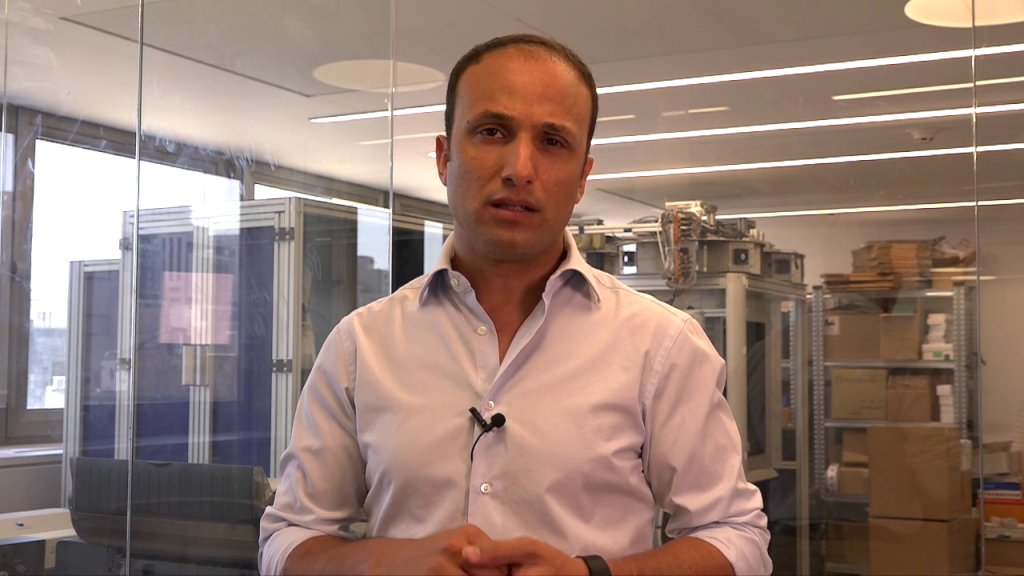A version of this article was published by KevinMD.
Primary care is at the heart of each and every healthcare system. Effective and efficient primary care leads to positive health outcomes across the board, most notably lower rates of mortality and hospitalization, and higher life expectancy. But to achieve such results, primary care needs an integrated system to support efficient care delivery.
Despite the diligent work performed every minute by doctors, nurses and other clinicians, the lack of an integrated support system can ultimately lead to failure in patient care. The coronavirus pandemic has only accentuated the need for a support system that can make primary care more effective and resilient. A system dynamic and flexible enough to support people at home, minimize interaction and wait times, empower patients to take control of their own care and independently monitor chronic conditions by bringing the right care to them in the right way at the right time.
A recent article by Julie Yoo of Andreessen Horowitz bemoans the brokenness of a health care system incapable of supporting primary care. According to Yoo, primary care’s very broad mandate—“the one-stop-shop we rely on for all of our general healthcare needs”—has left it overburdened and crumbling.
Primary care isn’t broken, but it’s missing a smart and integrated system to support it, by meeting people where they are and getting them where they need to be. That system should enable service line management, create pathways tailored to each individual patient and what ails them, and funnel patients to the nodes relevant to them.
Matching Patients With the Right Care Setting
Maximizing the doctor-patient relationship means matching patients with care teams best equipped to treat them. Rather than grouping everyone in a one-size-fits-all primary care waiting room, patients need a system that will match their unique needs with the ideal care setting, taking into account the staffing, equipment and experience level of each option.
Primary care clinicians typically adapt to the populations they serve. For example, if most patients in a given practice are young and healthy, that clinic will likely focus on primary prevention, acute care, and treatment for mild chronic diseases. That practice would probably be less suited to serving patients with complex multisystem chronic diseases and social comorbidities. Such patients would better achieve their health goals in an expanded practice that includes a community health worker, clinical pharmacologist, social worker, and other specialist team members on staff.
A mismatch between a patient’s needs and a clinic’s ability to address them can lead to care delivery that fails to result in the intended health outcome. A patient with a simple UTI may not need to wait an hour in a waiting room while other patients with complex problems see the doctor. On the other hand, a patient with complex medical and social issues may not receive the support that they need in an urgent care clinic.
While variety is a defining characteristic of primary care, an integrated healthcare system that efficiently routes patients to the most appropriate primary care setting can help usher in better health outcomes and experiences for both patients and their doctors. Not every practice is the same and systems should be built to appropriately match patients with the optimal care team. While this ideal is subject to variations in resources in a given geographic location, it is nevertheless one that we can strive for.
Shifting Primary Care Outside the Clinic
Recognizing patient diversity goes beyond treating them in the clinic best tailored to their needs. The entire patient journey should be reimagined, with new pathways that shift care outside of the traditional clinical setting towards a personalized primary care. Low risk conditions that are easily diagnosed and treated can be directed to telemedicine resources, with more involved ailments routed to primary care physicians or urgent care. Even more complex ailments and social situations require the involvement of a care team.
Similar to the stratification of everyday communication—in which we send text messages, place voice or video calls, or meet in person, depending on how and what we want to communicate—patients should be able to connect with primary care in the way that is most appropriate for their concerns.
In her article, Yoo advocated for an “unbundling” of primary care. Recent years have seen a growing number of alternative care sites, like urgent care clinics that can test and treat uncomplicated yet acute ailments like muscular backache, or common conditions like sore throats. These sites significantly ease the burden on primary care clinicians, and provide patients with a quick, convenient care experience.
Remote Care Beyond COVID-19
Remote care services have increasingly turned patients’ homes into care sites, a preferable option for patients vulnerable to face-to-face interactions. This is also happening organically in the form of direct to consumer telemedicine companies, rapidly expanding in the USA, offering niche low-risk treatments, such as UTI management, hair loss medication, acne treatment, and more. Patients have enthusiastically embraced such services to avoid waiting rooms.
Remote care is especially important today for people with chronic conditions for whom exposure to COVID-19 is dangerous but whose conditions should not go unchecked, or for other immunosuppressed groups like pregnant women.
Going forward, remote care will be key to facilitating more efficient primary care. Using telehealth whenever possible to monitor and treat patients with chronic conditions can provide them safe and comfortable care while releasing pressure from their clinicians, with significant savings to health care budgets.
Precision Medicine Comes to Primary Care
Ensuring that patients benefit from the full wealth of care opportunities available to them requires a sophisticated process of automated navigation. Precision medicine tailors highly customized care to each individual, examining patients on the molecular level and connecting them to a bespoke care program. While classically confined to subspecialty care such as cancer and gene therapy, this approach has much to offer primary care.
Bringing the precision approach to primary care means meeting patients where they are and funneling them to the right support system, while providing them with the tools they need to get there. This is relatively straightforward for common issues in healthy people, but it becomes more involved when considering patients with complex needs such as the elderly, the chronically ill, and reproductive age women.
The first step in an efficient triage system is identifying them as part of a particular patient cohort. Our systems are only as good as the data we have. For example, only 10% of patients with chronic kidney disease know they have the disease. The only way to refer those patients to the right care setting is to identify them first.
Precision primary care can also be used to quickly triage and treat patients with acute but straightforward needs, such as urinary tract infections. Seamless, consumer-facing solutions can match people with the most appropriate care, with minimal effort on their part and no compromise in the quality of care. Empowering people to receive care within a home setting and at their convenience, is a proven way to activate patients, granting them control and tools to manage their health with personally tailored interventions.
Primary Care at a Crossroads
As the COVID-19 curve flattens in some countries, this is an opportune moment to take stock of lessons learned and better prepare for the future. The growing adoption of remote care over the past few months has the potential to transform primary care in the long term.
We should aspire to emerge from this crisis with new, patient-centric approaches that improve the experiences of both patients and doctors and optimize care for patients across the care continuum. We need to design and optimize systems that understand who our patients are and direct them to the most efficient next step in their care.






